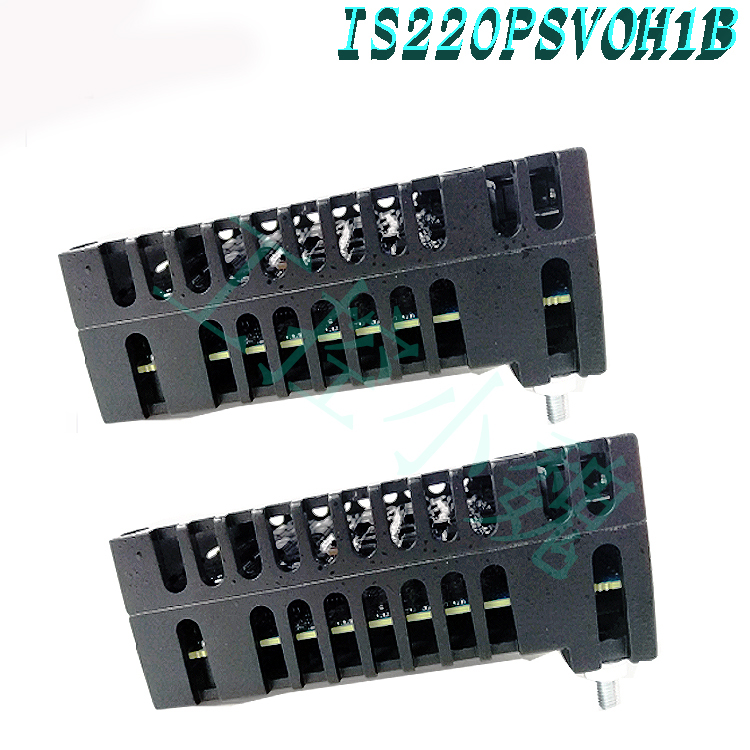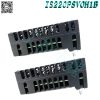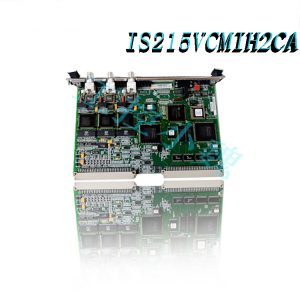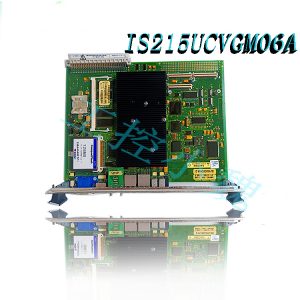Description
IS220PTCCH1A – Thermocouple Input Module is available in stock which ships the same day.
IS220PTCCH1A – Thermocouple Input Module comes in UNUSED as well as REBUILT condition.
To avail our best deals for IS220PTCCH1A – Thermocouple Input Module, contact us and we will get back to you within 24 hours.
Functional Description
IS220PTCCH1A is a thermocouple input module developed by General Electric. It serves as a bridge, connecting I/O Ethernet networks to a thermocouple input terminal board through a sophisticated electrical interface. Thermocouple Input Module is a sophisticated and versatile component of the Mark VIe series, designed to provide precise temperature monitoring in a wide range of industrial applications. Its compatibility with various thermocouple types, scalability in handling inputs, and user-friendly features make it a valuable asset in control and monitoring systems where temperature control and measurement are paramount.
Features
At the core of the module is a processor board that is common to all Mark VIe distributed I/O packs. This central processing unit acts as the brain of the module, orchestrating data acquisition and communication. It forms the foundation upon which the module’s functionality is built.(https://www.weikunfadacai1.com/)

The module boasts impressive scalability, offering flexibility in handling thermocouple inputs. In a Simplex setup with the TBTCH1B terminal board, each module can manage up to 12 thermocouple inputs. When two modules are employed in conjunction, this configuration allows for the monitoring of a total of 24 inputs.
Accommodates various thermocouple types, including E, J, K, S, and T thermocouples, as well as mV inputs. It encompasses a broad mV input range from -8 mV to +45 mV, ensuring compatibility with a wide array of temperature measurement devices.
To power the module, it features dual RJ45 Ethernet ports and a three-pin power input, simplifying power connection and providing redundancy for reliable operation. The module’s output interface is a DC-37 pin connector that directly interfaces with the terminal board connector, enabling a secure and efficient connection.
For real-time status monitoring and diagnostics, the module incorporates indicator LEDs. These LEDs provide visual feedback, allowing operators to assess the module’s operational status and swiftly identify any potential issues.
Compatibility
Dual RJ45 Ethernet ports and three-pin power input are used to power the pack. The output is a DC-37 pin connector that connects directly to the terminal board connector. Indicator LEDs are used to display visual diagnostics. It accepts E, J, K, S, and T thermocouples as well as mV inputs.
IS220PTCCH1A Installation
Secure the Terminal Board: Begin by selecting the terminal board that is suitable for your application. The terminal board provides the interface between the I/O pack and your system. Ensure that it is securely mounted and positioned as needed for your specific setup.
Connect the PTCC I/O Pack: Connect the I/O to the terminal board connectors directly. This step establishes the electrical connection between the I/O pack and your system. Make sure the connections are secure to prevent any loose or intermittent contact issues.
.jpg)
Ethernet Connections: Depending on your system configuration and networking requirements, you may need to connect one or two Ethernet wires to the I/O pack. You have the flexibility to use either port for network connectivity. If you opt for dual connections, make sure to connect ENET1 to the network linked with the R controller for proper network communication.
Power Connection: Connect the I/O pack to the power source by plugging in the connector on the side of the pack. It is important to note that the I/O pack incorporates an inbuilt soft-start feature. This feature regulates the current inrush when power is applied, eliminating the need to disconnect the connection before plugging it in. This simplifies the power connection process while maintaining system stability.
Configuration with ToolboxST Application: Once the I/O pack is physically installed and connected, the final step involves configuring the pack as needed for your application. This can be accomplished using the ToolboxST application, which provides a user-friendly interface for configuring and customizing the I/O pack’s settings to meet your specific requirements.
Operation
Processor
The processor board is connected to an acquisition board that is appropriate to the purpose of the I/O pack or module. The soft-start circuit ramps up the voltage available on the processor board when input power is applied. The processor reset is removed, and the local power supplies are sequenced on. The CPU runs self-test procedures before loading application code from flash memory that is particular to the I/O pack or module type. To verify that the application code, acquisition board, and terminal board are all correctly matched, the application code reads board ID information.
Auto-Reconfiguration
The Auto-Reconfiguration capability enables the operator to swap I/O packs without having to manually reconfigure each pack or module.
When the Auto-Reconfiguration functionality is activated, a reconfiguration file is automatically downloaded from the controller to the I/O pack when the controller detects an I/O pack booting with a different configuration.
Analog Input Hardware
The thermocouples linked to the terminal board send 12 signals at mV levels to the PTCC input board. Six differential multiplexers, the main multiplexer, and a 16-bit analog to digital converter deliver the digital data to the next processor board make up the analog input portion.
.jpg)
Diagnostics
The following self-diagnostic tests are carried out by the pack:
Power-Up Self-Test: Upon powering up, the pack initiates a comprehensive self-test. This test encompasses an array of critical hardware components, including RAM (Random Access Memory), flash memory, Ethernet ports, and the processor board. By examining these components, the pack can promptly detect any issues or discrepancies that might hinder its performance.
Power Supply Monitoring: The pack maintains constant vigilance over its internal power supply. It continually monitors power levels to ensure that the device is receiving the requisite voltage and current to operate optimally. This proactive monitoring safeguards against power-related failures or disruptions.
Electronic ID Verification: To confirm the integrity of the hardware setup, the pack verifies the electronic identification information of the terminal board, acquisition board, and processor board. This verification process ensures that the hardware components are consistent and that no unauthorized changes or replacements have occurred.
Relay Drive Validation: The pack performs a thorough check of the commanded state of each relay drive and cross-references it with the feedback received from the command output circuit. This cross-validation is critical for verifying that the relays are operating as expected, preventing potential issues caused by relay malfunction.
Relay Board Feedback Processing: The pack reads and processes feedback specific to the relay boards. This step is instrumental in evaluating the performance of relay boards and identifying any irregularities or issues that may need attention or maintenance.
Multicast Communications Monitoring: When configured with a PGEN pack, the system continuously monitors multicast communications. This real-time monitoring ensures the integrity and effectiveness of the communication system, helping to detect any anomalies, delays, or disruptions in the transmission of data.
The IS220PTCCH1A is a thermocouple input manufactured by General Electric for use within the Mark VI/Mark VIe systems. These systems were some of the later Speedtronic systems developed and released by General Electric for the management and control of gas, hydro and steam industrial turbine systems. This pack has an internally placed BPPx processor board as well as an acquisition board that is used for thermocouple input functions.
The IS220PTCCH1A can be used in simplex, duplex, and triple modular redundant applications. This board can support E, J, K, S, and T standard thermocouples as well as mV inputs with a span of -8 to 45 mV. E, J, K, S, and T thermocouples can be either grounded or ungrounded and can be located up to 984 feet from the turbine I/O panel. Cable resistance must be kept to a maximum 450 Ω. The number of packs used dictate the following:
Qty 1 IS220PTCCH1A – 12 Thermocouple Inputs
Qty 2 IS220PTCCH1A – 24 Thermocouple Inputs
Qty 3 IS220PTCCH1A – Used in TMR Configurations
The IS220PTCCH1A offers a maximum software error/conformity error of .25 degrees Fahrenheit. Common mode voltage is +/- 5 volts with AC common-mode rejection of 100dB @50/60Hz. Common mode rejection includes filtering for both hardware and software. The unit also includes normal mode rejection of 250 mV RMS @ 50/60 Hz (+/-5%) and high/low hardware and software limit checks. The unit is designed for operation in ambient conditions from -22 to +149 degrees Fahrenheit.
The IS220PTCCH1A can perform multiple self-diagnostics including power-up self-tests of flash memory, RAM, processor board hardware, and Ethernet ports. It also offers continuous monitoring of its internal power supplies to ensure proper functions.
Additional information about the IS220PTCCH1A, including important handling and installation instructions and warnings, can be found in GE product manuals and guides.
FREQUENTLY ASKED QUESTIONS
What is IS220PTCCH1A?
It is a Thermocouple Input Module developed by General Electrics.
How many thermocouple inputs can one module handle in a Simplex setup?
Each module can manage up to 12 thermocouple inputs in a Simplex configuration.
What types of thermocouples are supported by the module?
This module accepts E, J, K, S, and T thermocouples, as well as mV inputs within the range of -8 mV to +45 mV.
How is the module powered?
The module is powered through dual RJ45 Ethernet ports and a three-pin power input.
How does the module perform its initial setup and self-test procedures?
The processor board manages the soft-start feature and performs self-test procedures, ensuring that the application code, acquisition board, and terminal board are correctly matched.
Popular models:


.jpg)
.jpg)

-100x100.jpg)
-100x100.jpg)



-300x300.jpg)
Reviews
There are no reviews yet.